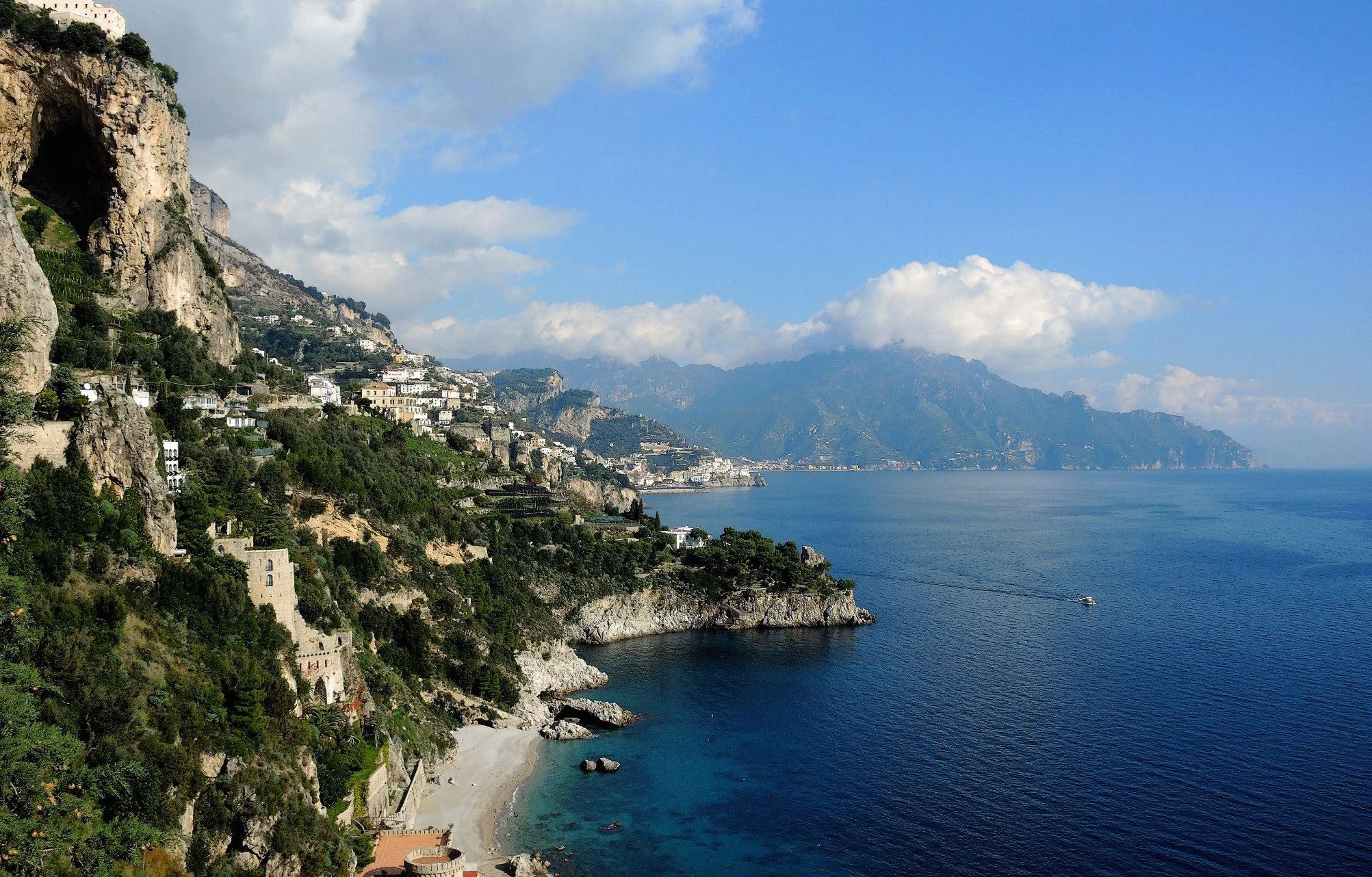Calamari e Piselli (Squid & Peas)
My first cooking experience with squid involved an embarrassing realization- it does not grow in rings. The only calamari I had ever consumed was of the battered and deep fried variety. Even then I don’t recall it ever being very good. More like a flaccid onion ring that we dipped in ‘marinara’ sauce as a sort of ketchup induced muscle memory.
In early adolescence as I became increasing obsessed with cooking, I ordered every culinary magazine I could think of and began to confront the disturbing limits of my seafood knowledge - chiefly that sticks and rings are not naturally occurring shapes of fish! It was only a matter of time that the fried rings of unknown provenance of my youth would come knocking on the door of my burgeoning culinary repertoire.
It was an overwrought Spanish recipe in Food & Wine magazine featuring chorizo, smoked paprika and Albariño that first tested my calamari moxy. The ingredients were a bitch to find (it was 1999) and the result turned out predictably horrible. The calamaro consequently would become my culinary albatross. I had a lot to learn. Naturally my parents were really excited about their fourteen year old experimenting with ink squiring cephalopods in the kitchen. I suppose things could have been worse.
Quickly I discovered that cleaning the squid was a kind of meditation on intelligent design. What a strange little creature. Beaks, tentacles, siphons, mantles and the dreaded ‘pens.’ As I would learn, dead squids still shoot ink if you puncture the wrong sack with a knife or errant fingernail. The struggle is real.
In Italy the preparations of squid are endless. Stuffed, grilled, stewed and yes, FRIED! Increasingly as I prepared the mighty squid here, I became an expert cleaner. Each time discovering secret nooks and beaks and crannies that continued to prove the magnificence of this sea creature. The ink well of the squid alone is a thing of wonder (and potential kitchen chaos). As proof of this, the word calamari comes from the Italian word for ink well, calamaio which in turn comes from ancient Greek. I suppose I am not the only one to have accidentally punctured the wrong sack while cleaning the viscera of this curious cephalopod. Hence the poetic name.
Strangely after two years mastering the anatomy of the squid, I have retired from my squid cleaning days. I have learned enough about inkpots and their proximity to squid buttholes to comfortably say that there is a degree of diminishing marginal returns when it comes to animal anatomy knowledge for the chef. I know enough to butcher a squid and sear it on an open flame. I don’t need to know how to cure one of rectal cancer (if that even is a thing)! Although a local marine biologist tells me that squids have evolved magnificent anuses.
Pescheria Azurra in the Pignasecca Market
Now I thankfully entrust the squid cleaning to the strapping gents of Pescheria Azurra in the bustling Pignasecca Market of Naples. Generally these fishmongers are comically insouciant with their customers but not to me. You guessed it. They love me. Largely because I find myself in the unique position of being a very foreign blond woman in a very crazy market and happen to have an uncommonly vast knowledge of squid anatomy. Basically I am the unicorn of the Pignasecca Market and the boys of Pescheria Azurra treat me like visiting royalty. Also I tip them a generous 50 cents every time they clean my squid sacks.
As they clean thee calamari for me, I ferret out old family recipes. Pescheria Azurra even let me pay with a credit card once. All because I casually explained that squid ink contains dopamine. And they were like, “What???? this lady knows stuff!” And I think we can all agree that squids are f*cking dope. Also, I am pretty sure that Pescheria Azurra lets everyone pay with a credit card now, but what do I know.
With the spring reticently rolling around, the iconic preparation of braised squid and peas is a Neapolitan tradition. I make this recipe just as the fresh peas appear at Pignasecca and I use medium sized adult squid. In Naples we enjoy squid on Fridays because we still eschew meat for borderline spiritual, mostly superstitious reasons that day. You do you!
I got this particular ‘recipe’ from an old fishmonger at Pescheria Azurra. When he saw my shopping bag full of fresh peas he barked a kind of faint memory/ essence of recipe in rapid fire Neapolitan. I was left to ferret out weights and measurements on my own. But that is the true spirit of Neapolitan cooking. Use what you have. Use what’s in season. And on the plus side, if you prick you squid’s ink sack, you’ll get yourself a mad hit of dopamine.
Piselli e Calamari (Squid and Peas)
Serves Four as a second main dish
Ingredients
2 tablespoons extra virgin olive oil
2 garlic cloves minced
1 bunch parsley minced
1 teaspoon crushed red pepper
2 teaspoons salt
4 medium squid (about 1 ½ lbs) cleaned and cut into rings and tentacles
1 cup dry white wine
½ lb canned whole, peeled San Marzano tomatoes
2 cups frozen green peas
Instructions
Heat olive oil in a wide rimmed sauté pan over medium flame
Add garlic, parsley, red pepper and briefly sauté for no more than 1 minute, being sure not to singe the garlic
Add all of the squid rings and tentacles and salt and sauté with garlic and parsley (you are not getting a full on maillard reaction sear here so it is ok to overcrowd your pan a bit) to coat in oil and lightly brown
Add wine and deglaze pan, reducing wine by half
Add tomatoes, bring to a boil reduce to a simmer
Simmer for 30 minutes, occasionally breaking tomatoes with wooden spoon and stirring
Add frozen green peas
Simmer for an additional hour
Garnish with fresh parley and serve with grilled peasant bread
*If you have left overs the next day you can serve tossed with calamarata pasta








